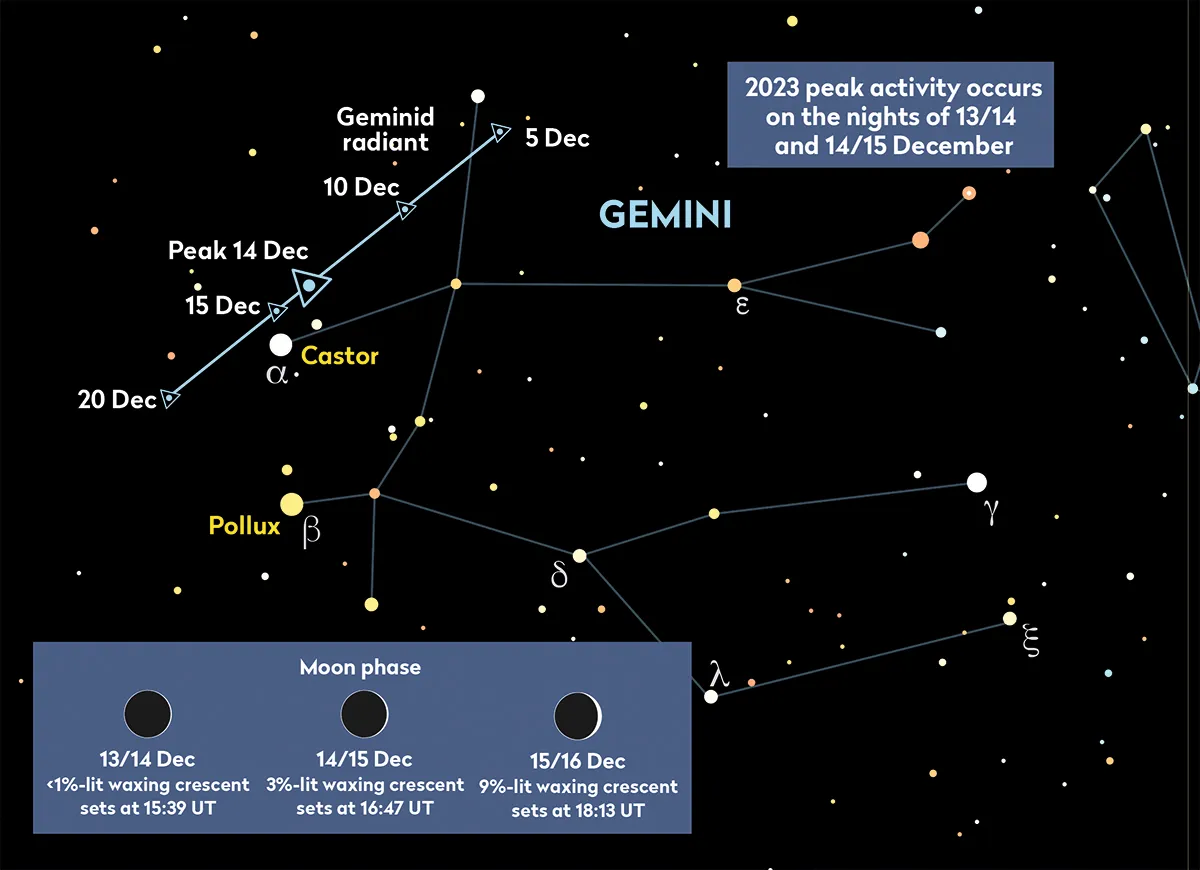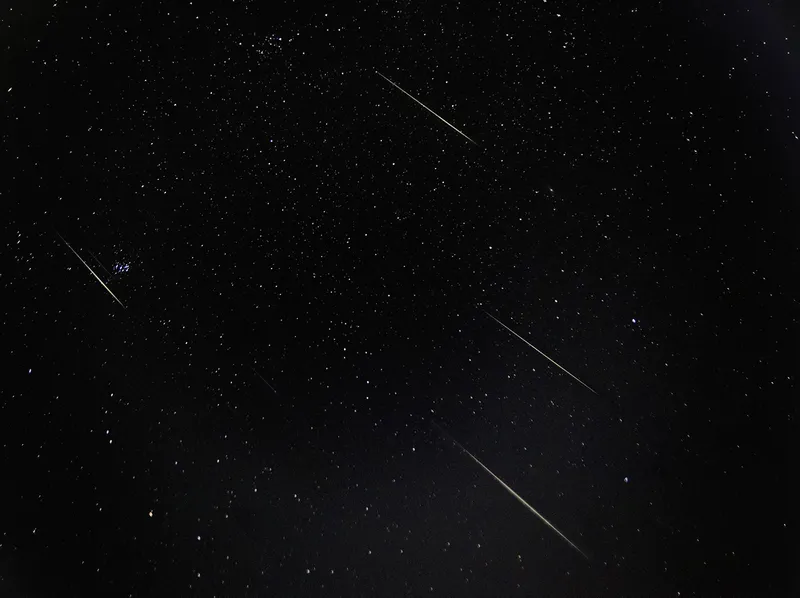The Geminid meteor shower is one of the best meteor showers of the year, and the best time to see it will be tonight and the next few nights, 13 - 15 December.
This is when peak Geminids activity will occur, and what's more, the Moon will be out of the way, in an early phase and setting early in the evening.
So with no lunar glare to spoil your view, and dark December nights perfect for spotting meters, see the the 2023 Geminid meteor shower tonight and catch one of the astronomy highlights of the year.
For the full picture, read Pete Lawrence's fantastic guide to the Geminid meteor shower and scroll down for our quick Gemind top tips.
Find out when the next meteor shower is happening and get weekly Moon rise times and phases sent directly to your email inbox by signing up to the BBC Sky at Night Magazine e-newsletter.

Geminid meteor shower quick facts
The radiant - the point in the sky from which the meteors appear to emanate, is in Gemini near the stars Castor and Pollux.
The Geminid shower has a zenithal hourly rate (ZHR) of 140–150 meteors per hour. This is the theoretical number of meteors you would expect to see under ideal conditions.
With the Moon out of the way and if you have clear skies tonight, there could be time for around 12 hours of Geminid meteor shower watching.
Sleep management and warm clothing are a must for serious Geminid watchers!

Observing the Geminid meteor shower top tips
Wrap up warm and use a sun-lounger or reclining chair to prevent neck ache
Observe with friends and family and keep watch in shifts, with comfort breaks in between.
Bring a flask of hot tea or soup to help keep warm - those December nights can get cold!
Allow 20 minutes for your eyes to adapt and avoid looking at bright artificial light
If you need a light, use a red torch
Look around two thirds the way up the sky, this being the best region to see a Gemind meteor
Any direction is fine, but trails will be shortest closer to the radiant and longest 90° from the radiant.

Find Gemini by drawing a line between Orion’s right foot (Rigel) and left shoulder (Betelgeuse).
Follow that line on for around the distance between your thumb and little finger stretched out at arm's length.
You'll see a pair of bright stars here: Castor and Pollux, the ‘heads’ of Gemini’s twins.
The radiant is just by Castor, but look slightly away from this region rather than directly at it.
If you spot a meteor coming from this region, you've seen a Geminid.
For more advice, watch our video guide to stargazing in December 2023 below, primed to begin at the Geminid meteor shower section.
Have you managed to see any Geminid meteors this year? Did you manage to photograph any? Let us know by emailing contactus@skyatnightmagazine.com or get in touch via Facebook, Twitter and Instagram.
